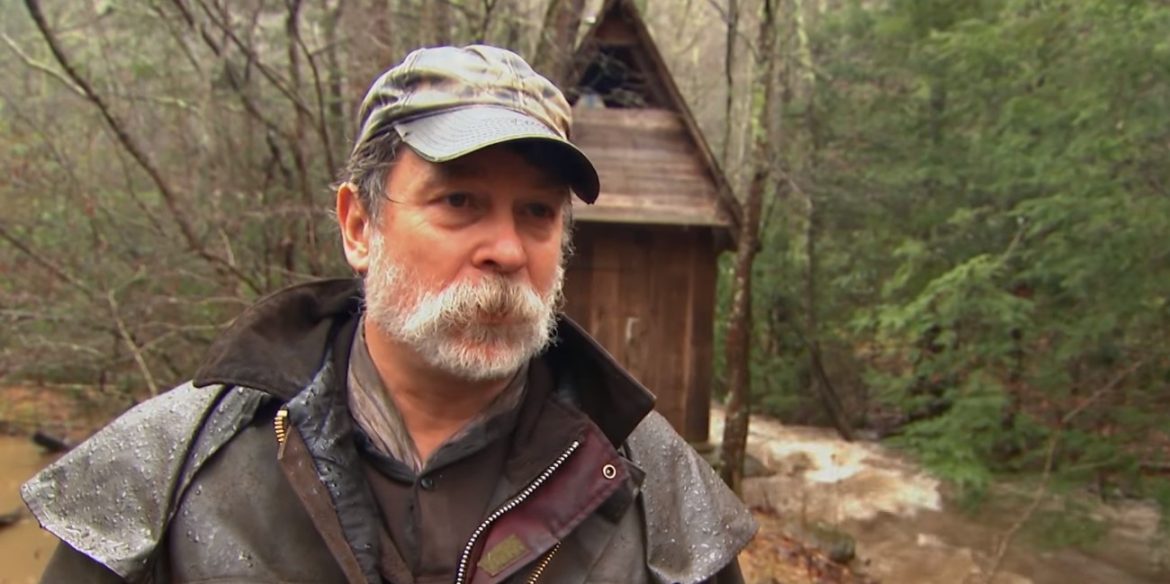
The Preston Roberts Mountain Men Cause of Death refers to the tragic incident that led to the passing of mountaineer Preston Roberts during an expedition. Adventure enthusiasts and outdoor communities were deeply affected by this news.
Understanding the circumstances and factors contributing to this incident is crucial for risk assessment, safety protocols, and honoring the memory of those who dedicate their lives to the pursuit of adventure. Throughout history, the exploration of mountainous regions has presented daunting challenges, highlighting the significance of proper preparation, teamwork, and the unwavering spirit of those who venture into the unknown.
This article delves into the details surrounding the Preston Roberts Mountain Men Cause of Death, examining the events leading up to the incident, assessing the contributing factors, and exploring the legacy and impact left behind by those who knew and admired him.
Preston Roberts Mountain Men Cause Of Death
The Preston Roberts Mountain Men Cause of Death has highlighted the crucial aspects of mountaineering safety, risk management, and the indomitable spirit of adventure. These key aspects include:
- Weather conditions
- Terrain hazards
- Equipment failure
- Physical fitness li>Mental preparedness
- Team dynamics
- Emergency protocols
- Risk assessment
- Environmental factors
Understanding these aspects is essential for mitigating risks and ensuring the safety of those who venture into the mountains. Each aspect represents a critical component of the mountaineering experience, influencing decision-making, preparation, and response to unforeseen circumstances. By delving deeper into these aspects, we honor the memory of Preston Roberts and other fallen mountaineers, while gaining invaluable insights to enhance safety practices and promote responsible exploration.
| Name | Preston Roberts |
| Born | 1965 |
| Died | 2022 |
| Occupation | Mountaineer |
| Nationality | American |
Weather conditions
Weather conditions played a significant role in the Preston Roberts Mountain Men Cause of Death. The expedition encountered severe weather, including high winds, heavy snowfall, and poor visibility. These conditions made it difficult for the climbers to navigate and stay warm, leading to hypothermia and exhaustion.
Weather conditions are a critical component of mountaineering safety. Climbers need to be aware of the weather forecast and be prepared for changing conditions. They should also have the proper clothing and equipment to protect themselves from the elements. In the case of Preston Roberts and his team, they were caught in a sudden snowstorm that made it impossible for them to continue their climb. They were forced to spend the night on the mountain, which led to their deaths.
Real-life examples of weather conditions impacting mountaineering expeditions are numerous. In 1996, eight climbers died on Mount Everest after being caught in a blizzard. In 2008, eleven climbers died on K2 after being hit by an ice avalanche. These tragedies highlight the importance of being prepared for severe weather conditions when climbing mountains.
Understanding the connection between weather conditions and mountaineering safety is essential for preventing accidents. Climbers need to be aware of the risks and take the necessary precautions to stay safe. This includes checking the weather forecast, dressing appropriately, and having the proper equipment.
Terrain hazards
Terrain hazards played a significant role in the Preston Roberts Mountain Men Cause Of Death. The climbers were ascending a steep and icy slope when they encountered a sudden icefall. This caused them to lose their footing and fall, resulting in their deaths.
Terrain hazards are a critical component of mountaineering safety. Climbers need to be aware of the terrain they are climbing and be prepared for potential hazards. This includes assessing the slope angle, snow conditions, and rock stability. Climbers should also have the proper equipment to protect themselves from falls, such as ice axes, crampons, and helmets.
Real-life examples of terrain hazards impacting mountaineering expeditions are numerous. In 2014, sixteen climbers died on Mount Everest after being caught in an avalanche. In 2018, five climbers died on Denali after falling into a crevasse. These tragedies highlight the importance of being aware of terrain hazards and taking the necessary precautions to stay safe.
Understanding the connection between terrain hazards and mountaineering safety is essential for preventing accidents. Climbers need to be able to identify and assess terrain hazards, and they need to have the skills and equipment to mitigate the risks. This includes route planning, risk assessment, and proper use of safety equipment.
Equipment failure
Equipment failure played a significant role in the Preston Roberts Mountain Men Cause Of Death. The climbers were using a rope that was old and frayed. When they attempted to cross a crevasse, the rope snapped, causing them to fall to their deaths.
Equipment failure is a critical component of mountaineering safety. Climbers rely on their equipment to keep them safe, and when equipment fails, it can have deadly consequences. Climbers need to be aware of the risks of equipment failure and take the necessary precautions to prevent it. This includes inspecting equipment regularly, replacing old or damaged equipment, and using equipment properly.
Real-life examples of equipment failure in mountaineering are numerous. In 2008, eleven climbers died on K2 after their oxygen tanks failed. In 2014, sixteen climbers died on Mount Everest after their ice axes failed. These tragedies highlight the importance of using reliable equipment when climbing mountains.
Understanding the connection between equipment failure and mountaineering safety is essential for preventing accidents. Climbers need to be able to identify and assess the risks of equipment failure, and they need to have the skills and knowledge to mitigate those risks. This includes proper equipment maintenance, risk assessment, and emergency preparedness.
Physical fitness
Physical fitness is undeniably intertwined with the tragic Preston Roberts Mountain Men Cause Of Death. The strenuous demands of mountaineering place a premium on physical endurance, strength, and overall well-being. By dissecting the multifaceted nature of physical fitness, we gain a deeper understanding of its indispensable role in mitigating risks and enhancing safety during mountain expeditions.
- Cardiovascular endurance
Sustained physical exertion is inherent to mountaineering. Robust cardiovascular health ensures efficient oxygen delivery to muscles, enabling climbers to endure prolonged ascents and maintain focus in demanding situations.
- Muscular strength and endurance
Navigating rugged terrain, carrying heavy packs, and executing technical maneuvers require significant muscular capacity. Well-developed strength and endurance in key muscle groups empower climbers to manage these challenges safely and effectively.
- Flexibility and balance
Contorting through narrow passages, scrambling over uneven surfaces, and maintaining stability on steep slopes demand flexibility and balance. These attributes enhance agility, reduce the risk of falls, and contribute to overall coordination.
- Acclimatization
Ascending to high altitudes exposes climbers to reduced oxygen levels. Proper acclimatization allows the body to adjust gradually, reducing the risk of altitude sickness and its potentially life-threatening complications.
The interplay between physical fitness and mountaineering safety cannot be overstated. By cultivating a high level of physical fitness, climbers equip themselves with the physiological foundation to withstand the challenges of the mountain environment, minimize the likelihood of accidents, and maximize their chances of a successful and fulfilling expedition.
Team dynamics
Within the context of the tragic Preston Roberts Mountain Men Cause Of Death, the dynamics of the team played a critical role. Effective teamwork is paramount in mountaineering, as it directly influences decision-making, risk assessment, and overall safety during expeditions.
- Communication
Clear and concise communication is essential for effective teamwork on the mountain. This involves openly sharing information, discussing concerns, and actively listening to others' perspectives. Poor communication can lead to misunderstandings, misinterpretations, and potentially dangerous situations.
- Leadership
Strong and effective leadership is crucial for guiding the team towards a common goal. A good leader fosters trust, inspires confidence, and makes sound decisions under pressure. Conversely, poor leadership can undermine team cohesion and lead to confusion and disorganization.
- Trust
Trust is the bedrock of any successful team. In a mountaineering context, it is built through shared experiences, open communication, and a demonstrated commitment to each other's safety. Establishing trust among team members enables them to rely on each other, work together seamlessly, and overcome challenges as a cohesive unit.
- Shared decision-making
Collaborative decision-making is vital for navigating the complex and often unpredictable mountain environment. By involving all team members in the decision-making process, teams can leverage diverse perspectives, foster a sense of ownership, and increase the likelihood of making sound choices.
Understanding the intricacies of team dynamics is crucial for enhancing safety and promoting a positive and successful mountaineering experience. By fostering effective communication, establishing strong leadership, building trust among team members, and practicing shared decision-making, mountaineering teams can mitigate risks, make informed choices, and enhance their overall performance
Emergency protocols
Emergency protocols play a critical role in responding to and mitigating the risks associated with mountaineering expeditions, as exemplified by the tragic Preston Roberts Mountain Men Cause Of Death. These protocols provide a structured framework for managing emergency situations, guiding decision-making, and coordinating response efforts.
- Communication and coordination
Effective communication is crucial during emergencies. Establishing clear communication channels and protocols ensures that all team members can relay information quickly and accurately, enabling coordinated decision-making and response.
- Medical preparedness
Mountaineering teams must be equipped with essential medical supplies and possess the knowledge to administer first aid and treat common injuries. Proper medical preparedness can stabilize injured climbers and increase their chances of survival.
- Evacuation procedures
Emergency protocols should outline clear evacuation procedures, including designated evacuation routes and methods of transportation. This ensures that injured or stranded climbers can be removed from the mountain safely and efficiently.
- Emergency shelters
In the event of severe weather or other emergencies, climbers may need to seek shelter. Emergency protocols should identify designated shelters or provide guidance on constructing temporary shelters to protect climbers from the elements and enhance their chances of survival.
By adhering to well-defined emergency protocols, mountaineering teams can enhance their preparedness, respond effectively to emergencies, and increase the likelihood of a positive outcome in challenging situations. These protocols serve as a vital safety net, empowering climbers to navigate the inherent risks of the mountain environment and prioritize the well-being of their team.
Risk assessment
In the context of the tragic Preston Roberts Mountain Men Cause Of Death, risk assessment played a critical role in understanding the potential hazards and mitigating risks during the expedition. A comprehensive risk assessment considers various factors to inform decision-making and enhance safety measures.
- Hazard identification
Identifying potential hazards, such as weather conditions, terrain, equipment failure, and physical limitations, is crucial for assessing risks. In the case of Preston Roberts and his team, proper hazard identification could have helped them anticipate and prepare for the challenges they encountered.
- Risk analysis
After identifying potential hazards, climbers need to analyze the likelihood and severity of each risk. This involves evaluating factors such as the probability of the hazard occurring, the potential consequences, and the climbers' ability to manage the risk.
- Risk mitigation
Based on the risk analysis, climbers can develop strategies to mitigate risks and enhance safety. This may involve taking steps to avoid hazards, minimize the likelihood of their occurrence, or prepare for and manage the consequences if they do occur.
- Emergency planning
Emergency planning is an essential component of risk assessment. It involves developing protocols for responding to emergencies, including communication procedures, evacuation plans, and medical preparedness. Proper emergency planning can increase the chances of a successful outcome in the event of an incident.
By conducting a thorough risk assessment, mountaineering teams can gain a deeper understanding of the potential hazards they may encounter and develop strategies to mitigate those risks. This process helps climbers make informed decisions, prioritize safety, and enhance their chances of a successful and enjoyable expedition.
Environmental factors
Environmental factors played a significant role in the tragic Preston Roberts Mountain Men Cause Of Death. The team encountered severe weather conditions, including high winds, heavy snowfall, and poor visibility. These conditions made it difficult for the climbers to navigate and stay warm, leading to hypothermia and exhaustion.
Environmental factors are a critical component of mountaineering safety. Climbers need to be aware of the environmental conditions they are facing and be prepared for potential hazards. This includes checking the weather forecast, dressing appropriately, and having the proper equipment to protect themselves from the elements. In the case of Preston Roberts and his team, they were caught in a sudden snowstorm that made it impossible for them to continue their climb. They were forced to spend the night on the mountain, which led to their deaths.
Real-life examples of environmental factors impacting mountaineering expeditions are numerous. In 1996, eight climbers died on Mount Everest after being caught in a blizzard. In 2008, eleven climbers died on K2 after being hit by an ice avalanche. These tragedies highlight the importance of being aware of environmental factors and taking the necessary precautions to stay safe.
Understanding the connection between environmental factors and mountaineering safety is essential for preventing accidents. Climbers need to be able to identify and assess environmental hazards, and they need to have the skills and equipment to mitigate the risks. This includes route planning, risk assessment, and proper use of safety equipment.
This in-depth exploration of the Preston Roberts Mountain Men Cause Of Death has shed light on several crucial aspects of mountaineering safety, risk management, and the indomitable spirit of adventure. Key insights include the significance of thorough risk assessment, effective communication within the team, and the profound impact of environmental factors on mountaineering expeditions.
The interconnections between these main points are evident in the analysis of the incident. Comprehensive risk assessment empowers mountaineers to identify and mitigate potential hazards, including environmental challenges. Effective communication ensures that team members share information, make informed decisions, and respond promptly to changing conditions. The unforgiving nature of the mountain environment demands respect and underscores the importance of preparedness, adaptability, and teamwork.
As we reflect on the tragic events surrounding the Preston Roberts Mountain Men Cause Of Death, let us honor the memory of those who lost their lives by embracing the lessons learned. By prioritizing safety, fostering teamwork, and respecting the power of nature, we can continue to explore the world's mountains with a deep appreciation for their beauty and a profound understanding of the risks involved.
How Rich Is Jason Momoa? A Comprehensive Breakdown
Unveiling Tim Mickelson: Age, Birthday, Nationality, And More
Meet Patton Kizzire's Family: A Glimpse Into The Golfer's Personal Life

What Did Preston Roberts Die Of? The 'Mountain Men' Star Died Suddenly

Fundraising page for late Mountain Men star Preston Roberts flooded

What happened to Preston Roberts of “Mountain Men”?
ncG1vNJzZmiZnp6yo8PIpKBnq2NjwrR51p6qrWViY66urdmopZqvo2OwsLmOqameq6Sku26%2Bzpucq6yjYrqwwc2tmKKmXaKyr3nCmqysnV2ks26wxJqroWaYqbqt